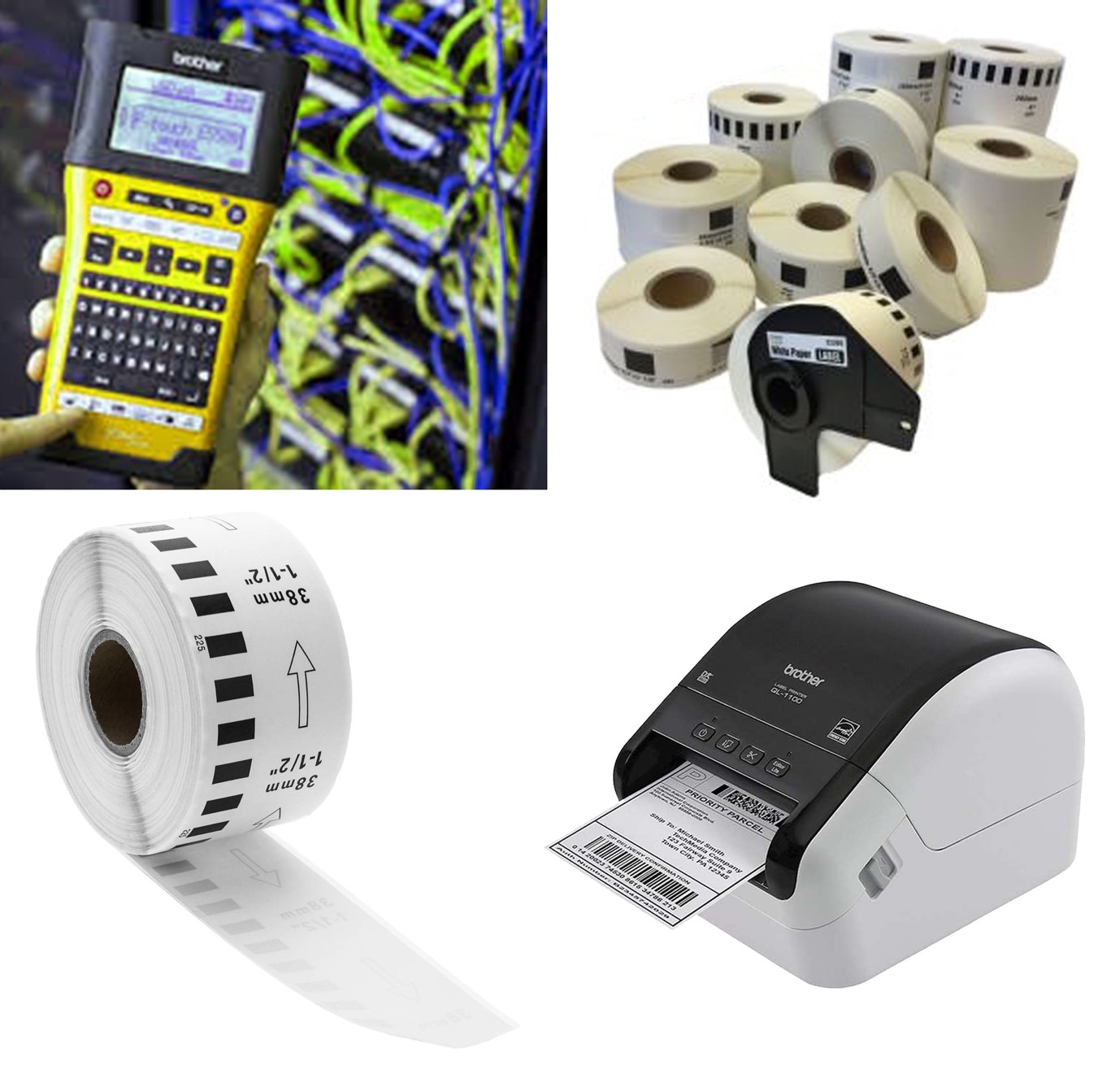
Brother printers are some of the best label printers on the market. However, there are times where you may need to improve their print quality.
For example, printing labels for high-end stores or to resist certain conditions means improved print quality is a necessity. The best way to achieve this with a Brother printer is through printer labels.
Below, we breakdown the major Brother printer labels and products to improve your print quality.
The Best Brother Print Products
If you’re stuck figuring out how to improve printer quality across your business, then you may need to try some specific printer labels.
Brother printer labels are add-ons that can improve your printing experience. These can be specific rolls, labels, tapes, inkjets, etc. Below, we list the three we think are best at improving the quality and output of your printing.
Film Tape
Film tape is a self-adhesive, often brightly coloured consumable that can improve the quality of printed labels.
Film tape boasts better insulation properties, water and chemical resistance, a more visually appealing look and improved longevity.
This diversifies the uses your printed materials can have as well as lessening the probability of them being damaged during or after the printing process.
Gloss Tape
Gloss tape lacks the practical advantages of film tape, but it has the added bonus of bold colours and eye-catching typography.
Gloss tape is there for times where you’re trying to figure out how to change print appearance, not necessarily to improve its quality because it changes how a label or print looks considerably.
If your printed labels are struggling to look visually appealing, then gloss tape could be the answer. With a rainbow of colours on offer, there are plenty of options to keep your customer’s eyes set on your products.
Different Label Shapes
It may seem like a small thing, but the shape of your printed labels can make a big difference. For example, many clients try to shoehorn in ill-fitting labels on their products, such as using square labels on CDs when circular CD/DVD labels exist.
If you’re not optimising the type of labels you’re printing on or using, then you’re going to run into problems with your printing.
The best consumable you can get is a label that fits your product perfectly. There’s no need to use the wrong labels when a large number of Brother printer shapes exist.
Level Up Your Print Quality Today
If you’re using a Brother printer and you’re not taking advantage of printer labels, then you’re selling yourself short.
Browse our range of Brother printer labels and improve your printing experience today.